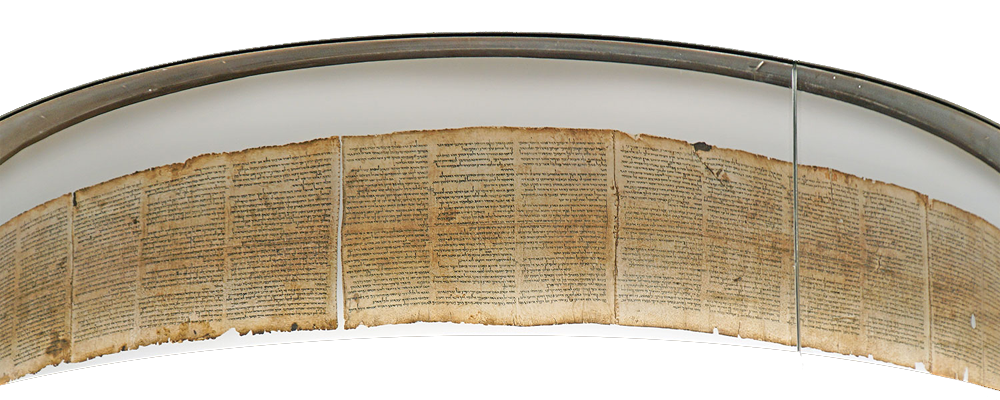Return to: Ancient Biblical Manuscripts

The most well-known texts among the Dead Sea Scrolls are the ancient religious writings found in eleven caves near the site of Qumran. Discoveries from additional sites yielded mostly documents and letters, especially papyri that had been hidden in caves by refugees from wars. While some of these writings survived as nearly intact scrolls, most of the archive consists of thousands of parchment and papyrus fragments.
Qumran Caves Scrolls
The Qumran Caves Scrolls contain significant religious literature. They consist of two types: “biblical” manuscripts—books found in today’s Hebrew Bible, and “non-biblical” manuscripts—other religious writings circulating during the Second Temple era, often related to the texts now in the Hebrew Bible. Of this second category, some are considered “sectarian” in nature, since they appear to describe the religious beliefs and practices of a specific religious community.

Scroll dates range from the third century B.C (mid–Second Temple period) to the first century A.D, before the destruction of the Second Temple in 70 A.D.. While Hebrew is the most frequently used language in the Scrolls, about 15% were written in Aramaic and several in Greek. The Scrolls’ materials are made up mainly of parchment, although some are papyrus, and the text of one Scroll is engraved on copper.
Biblical Manuscripts
About 230 manuscripts are referred to as “biblical Scrolls”. These are copies of works that are now part of the Hebrew Bible. They already held a special status in the Second Temple period, and were considered to be vessels of divine communication. Evidence suggests that the Scrolls’ contemporary communities did not have a unified conception of an authoritative collection of scriptural works. The idea of a closed biblical “canon” only emerged later in the history of these sacred writings.
Among the Scrolls are partial or complete copies of every book in the Hebrew Bible (except the book of Esther). About a dozen copies of some of these holy books were written in ancient paleo-Hebrew (the script of the First Temple era, not the standard script of the time).
Many biblical manuscripts closely resemble the Masoretic Text, the accepted text of the Hebrew Bible from the second half of the first millennium ce until today. This similarity is quite remarkable, considering that the Qumran Scrolls are over a thousand years older than previously identified biblical manuscripts.
Strikingly, some biblical manuscripts feature differences from the standard Masoretic biblical language and spelling. Additions and deletions in certain texts imply that the writers felt free to modify texts they were copying.
Digital Dead Sea Scrolls (imj.org.il) http://dss.collections.imj.org.il/
Return to: Ancient Biblical Manuscripts
